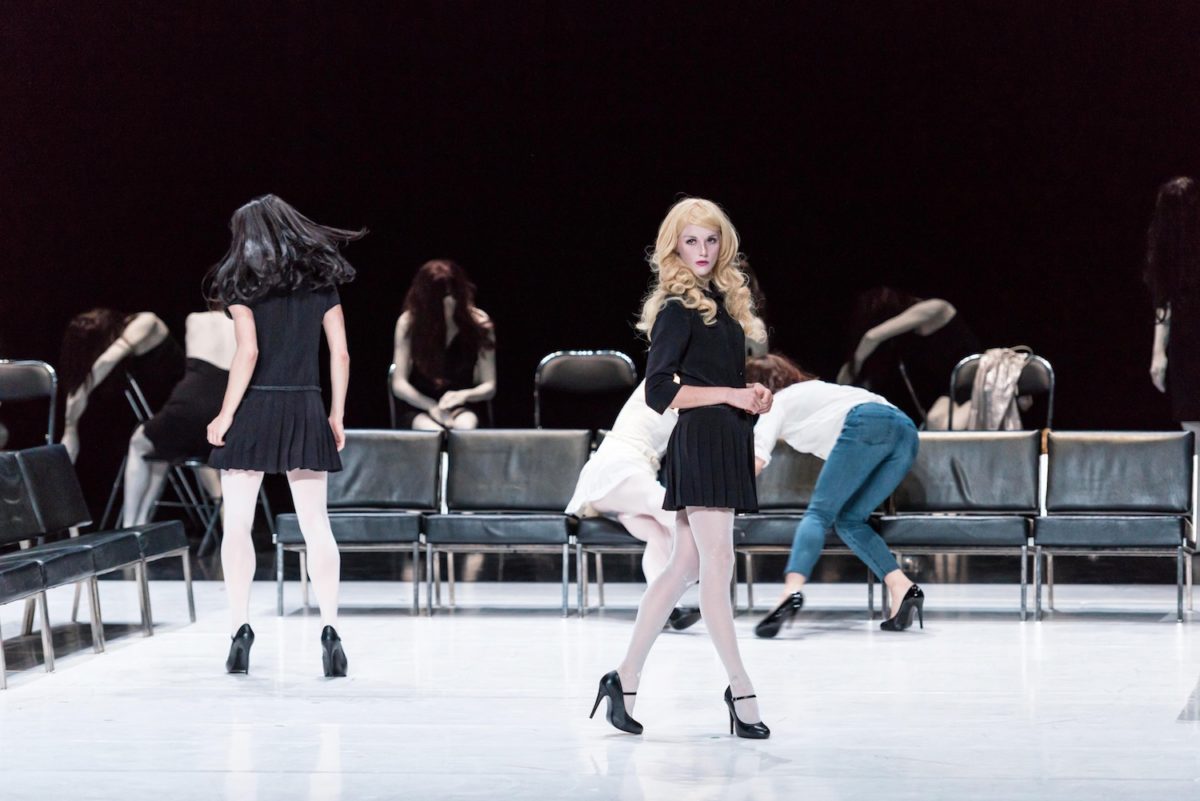Showroomdummies #3
Cast
Directing, choreography and scenography Gisèle Vienne & Etienne Bideau-Rey
Original music Peter Rehberg except one song created and interpreted by Tujiko Noriko on a music arranged by KTL (Stephen O’Malley & Peter Rehberg)
Light Patrick Riou
Costumes’ design José Enrique Ona Selfa
Costumes Martine Augsbourger from Atelier des Costumes du CCN – Ballet de Lorraine
Wigs and make-up Mélanie Gerbeaux
Assistant choreographers Anne Mousselet & Anja Röttgerkamp
Rehearsal director Thomas Caley
Performed by the dancers of the CCN-Ballet de Lorraine Vivien Ingrams, Laure Lescoffy, Valérie Ly-Cuong, Sakiko Oïshi, Elisa Ribes, Ligia Saldanha, Marion Rastouil, Tristan Ihne or Marc Galvez
Partners
Rewritten for the CCN-Ballet de Lorraine – Premiered by the CCN-Ballet de Lorraine April 4, 2013 at the Opéra national de Lorraine
Executive producer DACM
Creation 2001
Coproducer Bonlieu Scène nationale Annecy in the frame of the project Banane Bleue supported by Région Rhône-Alpes & Le Cargo – Maison de la culture de Grenoble
With the support of Centre Chorégraphique National de Grenoble in the frame of accueil-studio 2001, Ministère de la Culture – DRAC Rhône-Alpes, Institut International de la Marionnette, Brise Glace de Grenoble, Fondation Marcel Bleustein-Blanchet, Fondation de France & European Union – EU program for Youth
With the support of Ville de Grenoble & Conseil Général de l’Isère
Re-creation 2009
Coproducer Le Quartz Scène nationale Brest (Gisèle Vienne is associate artist from 2007 to 2011)
With the support of the Parc National de la Villette for providing a rehearasal studio
Presentation
Showroomdummies #3, inspired by La vénus à la fourrure by Leopold von Sacher Masoch (1870) is a bewildering performance mixing dance, theater and visual art.
Severin, main character, is a man who falls in love with a statue of Venus. He met Wanda troubling personification of this venus that will allow him to fulfill his fantasies. Wanda, his goddess, and Severin which will soon voluntarily become its slave.
In a combination of austerity and sensuality the work progresses through a slow and mechanical choreography supported by the electronic music of the Austrian composer Peter Rehberg.
History
-
27, 28, 29 January 2015
-
03, 04 May 2014
-
08, 09 July 2013
-
04, 05, 06, 07 April 2013

